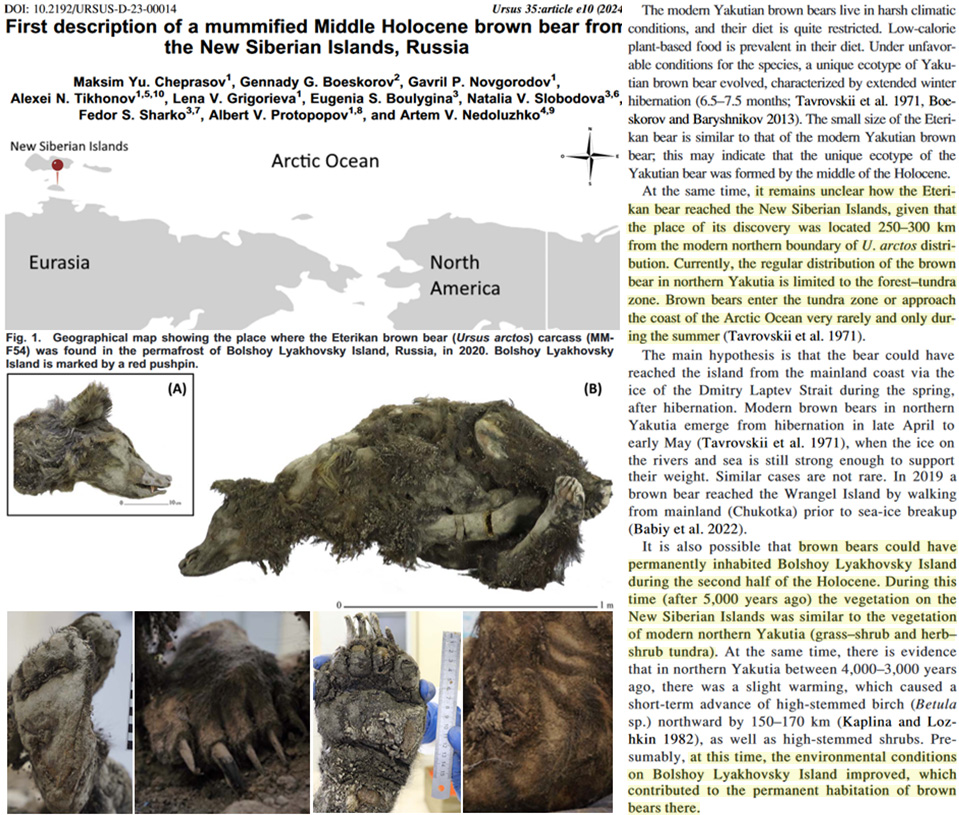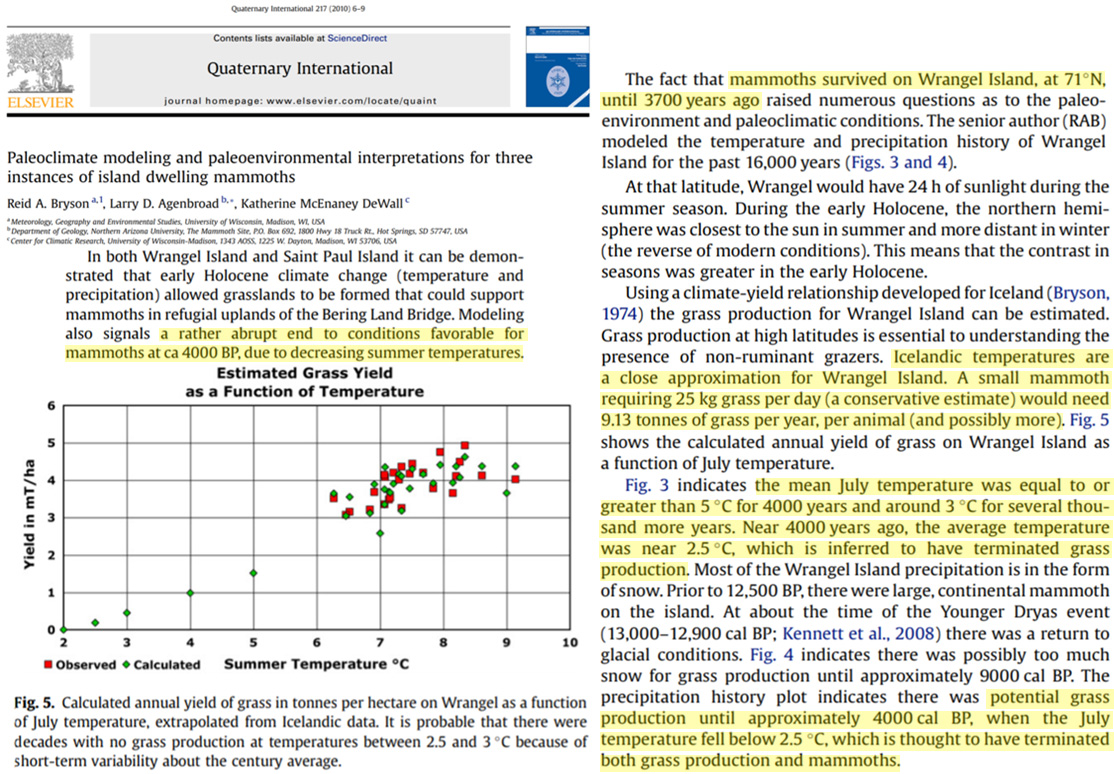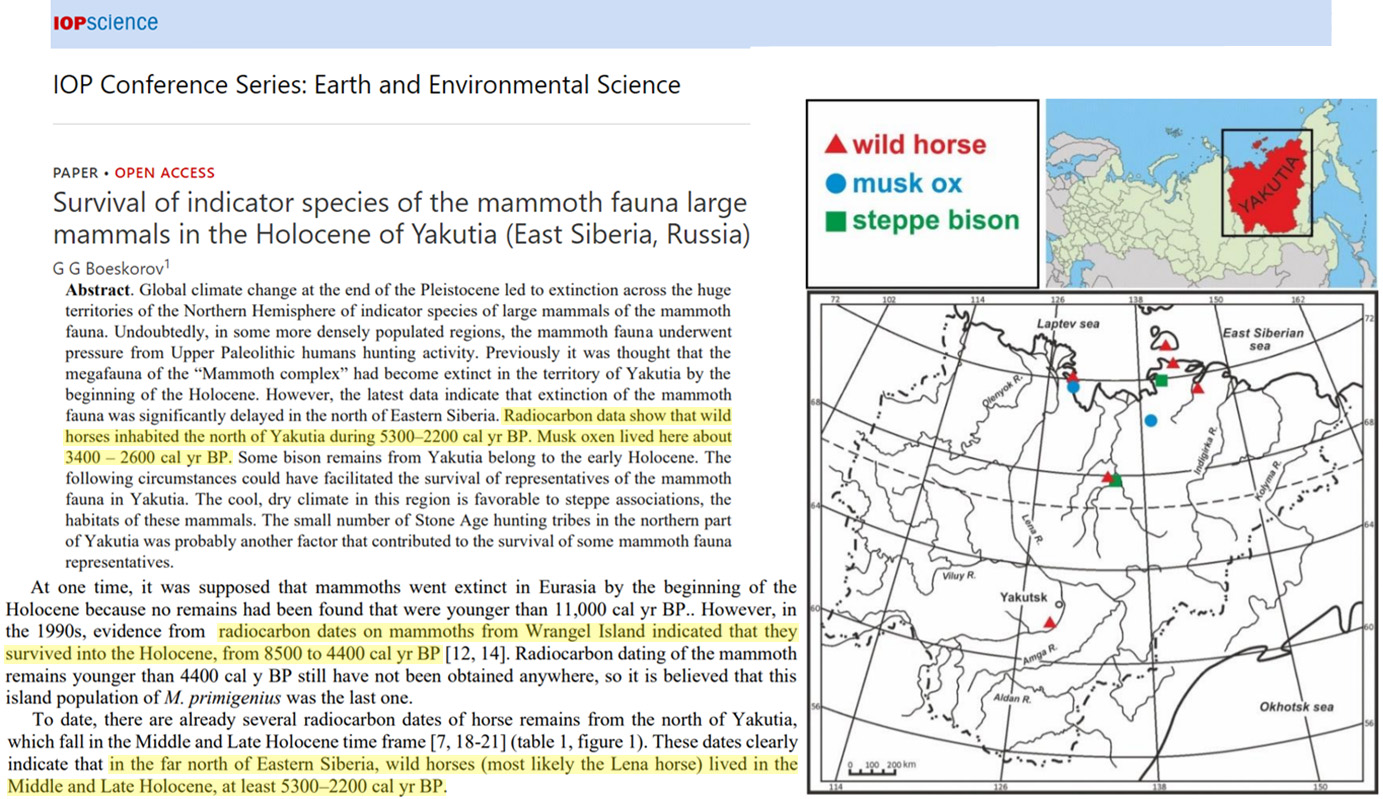A new study provides still more evidence the Arctic was warmer than it is today as recently as a few thousand years ago.
In 2020 the well-preserved carcass of a Yakutian brown bear (Ursus arctos) was discovered buried in permafrost on the terrain of the treeless tundra Bolshoy Lyakhovsky Island in the Arctic Ocean, 73°N.
The Yakutian brown bear currently occupies only the forested regions of Eurasia, with a northern limit of northern Yakutia (Republic of Sakha), 65°N.
The female bear’s age has been dated to approximately 3500 years ago, during the Middle to Late Holocene. At that time the Arctic was warm enough at that latitude to support vegetation (grasses, shrubs) that only persist in the northern Yakutia region today.
The authors suggest brown bears may have been permanent residents of the Siberian Arctic’s islands from about 5000 years ago until a few thousand years ago, when, as today, the Arctic became too cold for the vegetation production requisite for their sustenance.

Image Source: Cheprasov et al., 2024
In the same vein, the Arctic’s Wrangel Island (71°N) is home to extensive mammoth remains. Radiocarbon dating indicates the woolly mammoth continued living on this island until 3700 years ago, or until the Arctic climate became too cold to provide enough grass year-round to sustain them (Bryson et al., 2010, Arppe et al., 2019).
A small mammoth is modeled to have conservatively required 25 kg of grass per day to survive. Mean July temperatures decreased from above 5°C during the Early Holocene to below 2.5°C – the threshold for grass production – by about 4000 years ago. Consequently, without enough year-round grass to feed on, the woolly mammoth died out (Bryson et al., 2010).

Image Source: Bryson et al., 2010
Other research (Boeskorov, 2020) has provided further evidence the Arctic climate was hospitable to grass-eating megafauna until as recently as a few thousand years ago.
The remains of wild horses, musk ox, and bison have been located north of the Arctic circle in the East Siberian Sea (Arctic Ocean) dating to 5300 to 2200 calibrated years before present. The northernmost Siberian climate is far too cold to sustain these large mammals with enough food year-round today.






Recent Comments